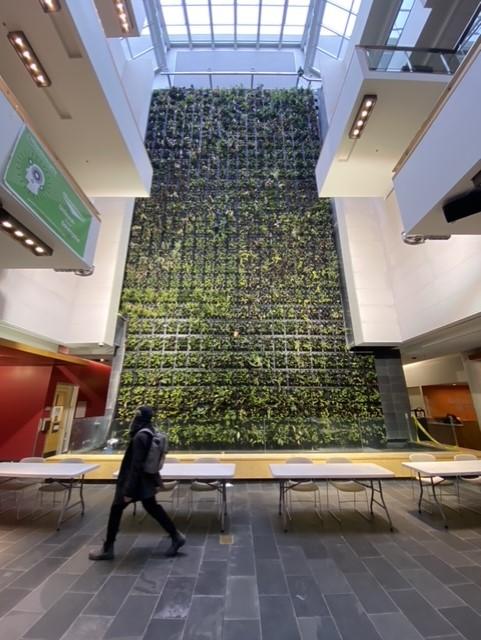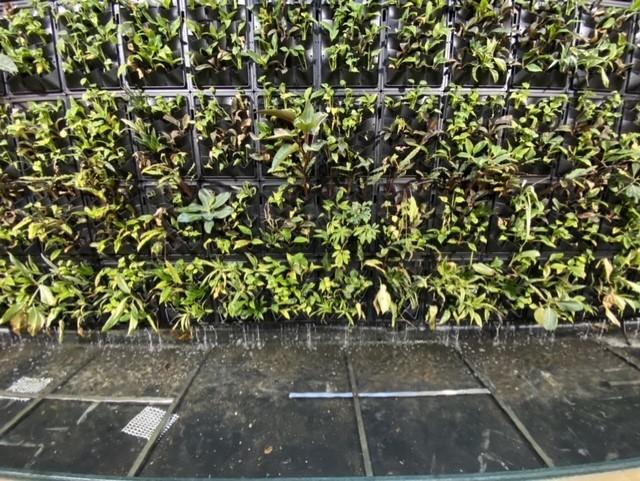After nearly two decades, the plant wall at the University of Guelph-Humber (U of GH) had reached the end of its lifecycle.
The wall, located in U of GH’s central atrium, stood four-storeys tall and was made up of plants from 100 different species. Over the years, it had grown into a dense and lush mix of foliage.
Spencer Wood, director, Facilities Management with Humber, said the wall was designed into the atrium when the building was built in 2003. The infrastructure behind the wall was aging and needed to be replaced and Wood said it meant they had to remove the wall and rebuild it.
“Since the wall is such a visual icon for the University of Guelph-Humber and provides valuable indoor air quality benefits to the building, it was an easy decision to make to refurbish it,” said Wood.
Roughly 8,000 plants in the new wall
Dylan Robertson is co-founder of New Earth Solutions, the company tasked with replacing the wall. He noted that the old wall had pests and many of the plants were dead or dying.
They removed the existing plants and tore the wall down before they began the process of building a new one. About 8,000 plants were planted in the new wall. Most are in their infancy – standing just a few inches tall – but will grow to their full size in about 18 weeks.
Robertson says, within a year, the wall will reach full lushness.

They used non-pollinating, low-light tropicals to avoid aggravating anyone’s allergies and to help the plants grow in a lower light environment.
“We’re trying to improve air quality, not make a mess of it,” said Robertson.
They also replaced the lift used to move people up and down the wall for maintenance and care of the plants.
Reaching a height of 57 feet with a width of 30 feet, the wall is one of the largest in Canada.
The work began at the beginning of November and wrapped up in late December.
Improving air quality
“This wall means a lot to a lot of people and there are many stakeholders that really care about it,” said Robertson. “There’s…pride at the University of Guelph-Humber about the wall so the project was meaningful for us.”
He noted the wall isn’t just for aesthetics – it’s actively improving air quality. It sucks in air through the return duct of the HVAC system and that brings the air into the roots of the plant. The air is then redistributed throughout the building via the HVAC system.
“The roots of the plants are super important because that's where the microbiomes that break down toxins and chemicals exist,” said Robertson. “Most people think it's the leaves of the plants, but it's actually the microbes living on the roots of the plants that are breaking down those toxins.”

New Earth Solutions has installed sensors and will remotely monitor the wall’s water temperature, water quality and nutrient levels as well as humidity levels and air quality in the atrium. They will maintain the plants and the wall going forward with employees visiting the site each month for maintenance.